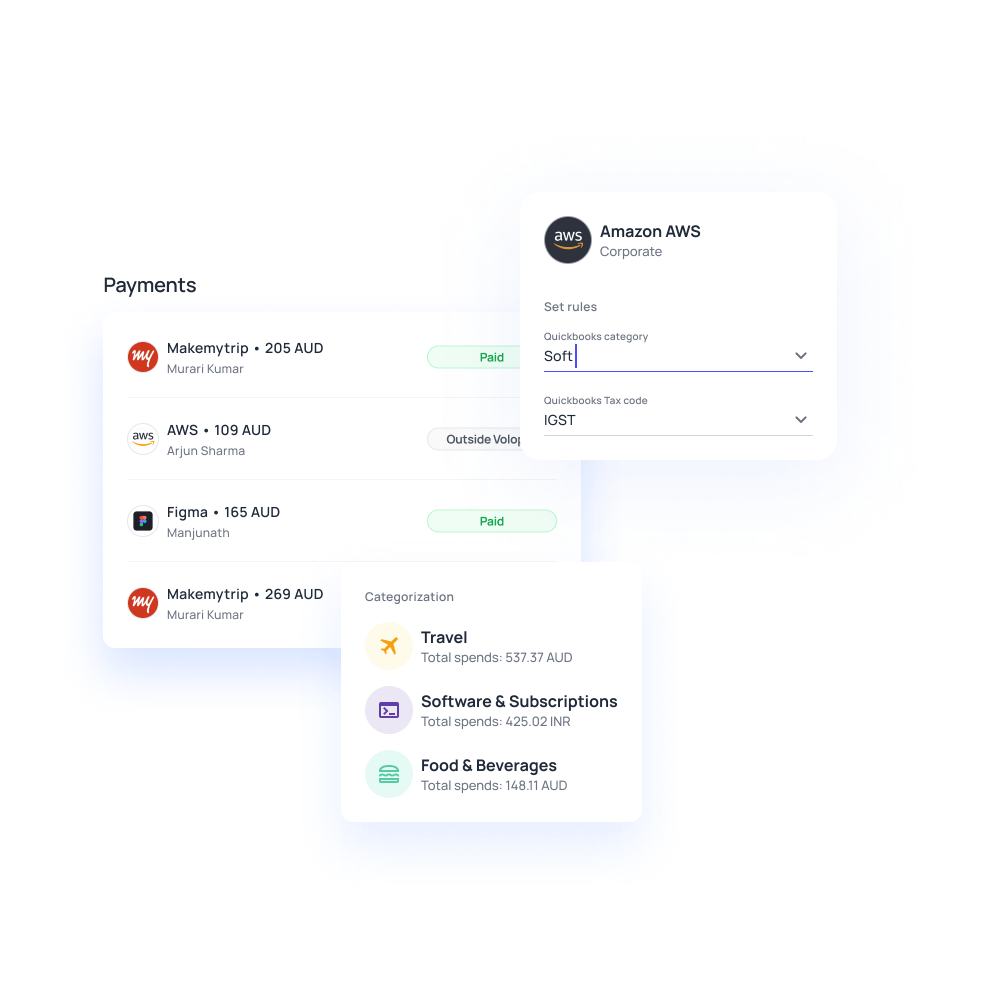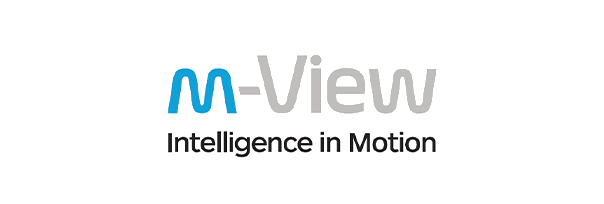What are prepaid expenses and how to account for them?
Prepaid expenses for small businesses are payments made in advance for goods or services that will be received or used in the future. Common examples include rent, insurance, and subscriptions. These expenses are recorded as assets on your balance sheet until the service or benefit is fully received, helping maintain accurate financial records.
Properly managing prepaid expenses supports better budgeting and financial planning. For small businesses, using tools like prepaid cards can simplify this process. Prepaid cards allow you to control spending, schedule payments, and track usage in real time, making them an efficient solution for managing prepaid expenses effectively and with minimal manual effort.
What are prepaid expenses?
Prepaid expenses are costs that your business pays in advance for goods or services it will receive in the future. Under accrual accounting, these payments are not immediately recorded as expenses. Instead, they are classified as assets on your balance sheet because they represent future economic benefits. As the service or benefit is used over time, such as monthly rent or annual insurance premiums, the prepaid expense is gradually expensed on your income statement.
Understanding what are prepaid expenses is essential for maintaining accurate financial records and ensuring compliance with accounting standards.
These expenses play a crucial role in budgeting and forecasting cash flow. Prepaid cards can be handy for managing prepaid expenses efficiently. They allow you to pay for subscriptions, rent, or software tools in advance while maintaining full control over your spending.
With real-time tracking and integration with accounting systems, prepaid cards help streamline the entire prepayment process for your business.

Why are prepaid expenses important for businesses?
1. Accurate financial reporting
Accurate financial reporting is dependent on matching expenses with periods during which they add value, a key concept of Generally Accepted Accounting Principles (GAAP). Prepaid expenses help you with this by allowing costs to be amortized.
For example, when you prepaid insurance for a year, you do not immediately expense it. Instead of that, you book it as an asset and amortize the cost every month. This matching principle is more realistic in representing your financial performance and avoids overstating or underestimating profit in a specific period.
If you make such payments through prepaid cards, it is easier to book and receive correct payments. This gives you cleaner books and better audit readiness for your company.
2. Cash flow planning
Effective cash flow planning is important to business survival and expansion. Managing prepaid expenses helps you better project outgoing payments since these costs are agreed upon and locked in advance.
Whether you're paying rent for the next quarter or paying for an annual software subscription, prepaid expenses give you a clear picture of future expenditure obligations. This helps you plan funds better and avoid last-minute cash shortages.
Prepaid cards offer a handy solution here, they enable you to control spending, monitor usage in real-time, and limit payments on specific merchants or categories. Companies looking to have greater control over cash flow can combine prepaid expenses with a prepaid card system for more efficient, predictable financials.
3. Tax deduction strategy
It is important to gain an understanding of prepaid expenses for small businesses in order to plan your tax deduction strategy. Although prepaid expenses are not deductible directly, they can be claimed as the benefit is realized, in accordance with accrual-based accounting.
The timing in such a manner can prove to be advantageous, allowing you to manage taxable income and maximize deductions over time. For example, when you prepay advertising expenses or insurance premiums, these figures are deductible collectively as services are received.
Utilizing prepaid cards assists in organizing and recording these payments, providing a distinct audit trail. Proper prepaid expense management also avoids overlooking valid deductions. With an effective strategy, you can help ensure that tax returns accurately portray expenses and your company maximizes available deductions.
4. Budget forecasting
Prepaid expenses offer a solid basis for more precise budget forecasting. Since these payments are prepaid and often cover fixed periods, like annual subscriptions or four-month rent, they eliminate uncertainty from some expense buckets.
That allows you to build more precise financial models and assign resources effectively. Prepaid cards add another degree of control by allowing you to pre-load budgets, set limits, and monitor usage. This avoids overspending and ensures each department stays within its budget.
For small businesses willing to become more financially responsible, understanding how prepaid expenses fit into your budgeting process can be a life-altering experience. Both forecasting techniques and prepaid cards lead to better-informed decisions and improved fiscal management.
5. Vendor discounts
Prepaying expenses has the benefit of disclosing potential vendor discounts that add to your bottom line. Many vendors offer advance or early payment incentives, which can mean significant long-term savings. Understanding what prepaid expenses are and using prepaid cards in making such prepayments helps you seize such opportunities without depleting your working capital.
Prepaid cards offer spend controls, real-time tracking, security, and correct and intentional prepayments. You can also eradicate approvals and minimize administrative overheads. For small companies, the savings can be substantial and influence vendor relations for the better.
Active management of prepaid expenses places your company in the confidence of a trustworthy and financially robust organization, likely to receive favorable terms, earlier service, and preferential assistance from suppliers.
Common examples of prepaid expenses
Prepaid rent
Prepaid rent is a common expense, especially for businesses leasing commercial buildings. Paying rent months in advance—or even for an entire year—can provide stability and, in some cases, favorable lease terms.
Prepayment of rent through prepaid cards allows businesses to set aside funds specifically for this purpose, preventing cash flow disruptions. It also ensures timely payments without relying on traditional banks.
Prepaid cards further provide budgeting tools and transaction tracking functions, making it easier for small businesses with tight margins to monitor and manage advance rent payments.
Prepaid insurance
Companies often pay insurance premiums in advance for policies such as liability, health, or property insurance. These are treated as prepaid expenses because the benefit lasts over the policy duration.
Advance payment of insurance secures rates and avoids the inconvenience of monthly invoicing. Using prepaid cards adds advantages like expenditure controls, spending limits, and simple reconciliation.
Prepaid cards also make it easier to track insurance payments, document transactions for accounting or auditing, and efficiently manage large upfront premiums without straining cash flow.
Prepaid subscriptions
Most firms rely on subscriptions for software, tools, or content platforms. Paying in advance for SaaS products like CRM systems, project management software, or cloud storage often brings discounts and uninterrupted service.
Prepaid or pay-as-you-go cards enable teams to budget subscriptions within set limits while giving businesses real-time visibility into spending. This reduces the risk of unauthorized payments and overspending.
They also allow one-time cancellations or modifications directly from the card, eliminating lengthy processes. For small and growing businesses, prepaid cards make it easier to control.
Prepaid utilities
Some suppliers allow prepaid usage of essential services such as electricity, water, or the internet. Making these payments in advance gives small companies greater cost transparency and reduces the risk of service interruptions due to late payments.
Small businesses using this approach enjoy more stable cash flow and can better handle fluctuations in utility usage. With prepaid cards for utility bills, companies can set spending limits, receive alerts, and monitor real-time usage.
Prepaid cards also help separate utility expenses from other costs for easier accounting. For small businesses and remote teams, they ensure essential services remain active without straining monthly budgets, resulting in smoother operations and better-managed expenses.
Prepaid advertising
Advertising is often a significant and variable expense for businesses. Paying in advance for campaigns, whether digital, radio, or print, can unlock discounted rates, provide budgeting flexibility, improve financial planning accuracy, and secure consistent ad placements.
Prepaid cards are especially useful for managing advertising budgets, as they allow firms to set strict spending limits and allocate funds to marketing teams. This prevents overspending, improves expense tracking, and reduces billing errors.
For example, a business can load a set amount onto a prepaid card before running Facebook or Google ads, ensuring the campaign stays within budget. This makes marketing costs easier to reconcile and improves accountability, while also promoting discipline and better return on investment.
How to account for prepaid expenses
Record as an asset
If a company makes advance payments for services such as rent, insurance, or subscription, especially through prepaid cards, the payment has to be posted as a current asset on the balance sheet under "Prepaid Expenses."
That is because the cost of the expense will be benefited from in future periods. For example, if a company pays in advance six months' rent with a prepaid business card, the amount is not expensed immediately. Instead, it is shown as a prepaid expense and remains so until the service is used.
This accounting prevents overstating the expenses for a particular accounting period. Using prepaid cards in these transactions makes it easier to track and reconcile at a finer level, such that prepaid items can be easily segmented and tracked on accounting systems. It increases control over fund allocation and preparation for audit.
Amortize over time
Prepaid expenses are to be amortized over the period for which the benefit or service is being enjoyed. For instance, if a company pays in advance for a one-year insurance policy using a prepaid card, it should only account for one-twelfth of the payment each month.
The rest is an asset until the benefit is entirely utilized. This manner ensures that expenses are matched with revenues during the same period, adhering to the matching principle of accrual accounting. Amortization prevents inconsistent expense reporting and avoids deceptive cost spikes.
Accounting software can be used to automate the process by setting up routine adjustments. When prepaid cards are implemented, combining card information with your accounting system ensures each amortized amount is properly tracked. This process adds transparency to prepaid expense control and aids in good financial decision-making by providing a clear picture of future cost obligations.
Journal entries
It is critical to maintain accurate journal entries for prepaid expenses in accounting. If a prepayment is made, such as purchasing software subscriptions or insurance on a prepaid card, the first journal entry is to debit the "Prepaid Expenses" account and credit "Cash" or "Prepaid Card."
This captures the cash outflow and acquisition of an asset. Since the value of the prepaid item is eventually accrued over time, a second journal entry is made: debit the corresponding "Expense" account (such as Rent Expense, Insurance Expense) and credit "Prepaid Expenses."
This reduces the asset and correctly accounts for the expense in the proper accounting period. Consistency in journal entries ensures accuracy, compliance with standards, and easier audits. With prepaid cards, firms gain benefits of electronic records, aiding automation and ensuring no prepaid expense remains unreported or misstated in the system.
GAAP compliance
To ensure accuracy and disclosure, prepaid expenses must adhere to Generally Accepted Accounting Principles (GAAP). GAAP necessitates the use of accrual accounting, where expenses are recognized when incurred and not yet paid.
This would mean that prepaid expenses must be recorded as assets and must be accounted for in an orderly manner over the period the benefit is obtained. Not following this process may result in financial statements being misstated as well as non-compliance issues. With prepaid cards used to make these payments, documentation and classifying expenses further becomes necessary.
Prepaid cards give data on each transaction, simplifying expense tracking and amortization. By adhering to GAAP, businesses stay compliant while improving reporting, investor confidence, and audit readiness. With prepaid cards and GAAP-compliant procedures, firms can automate accounting and maintain integrity and efficiency across departments.
Software integration
Emerging accounting platforms like QuickBooks, NetSuite, and Xero can be integrated with prepaid cards to automate prepaid expense tracking. If a company uses prepaid cards to make payments for such items as rent, insurance, or subscriptions, the platforms are also able to automatically categorize payments, book them as assets, and automate amortization entries.
Integration avoids manual entry, reduces errors, and prevents prepaid expenses from being recorded incorrectly and expensed over time. Expense rules and automated journal entries are capabilities that meet accrual accounting standards and GAAP specifications.
API-integrated prepaid cards make it easy to synchronize transaction data, with real-time viewing into prepaid accounts. This automation saves time for finance teams, is more accurate, and improves audit trails. The solution with prepaid cards integrated with accounting software is an easy-to-scale option for growing companies with efficient, transparent prepaid expense management.
Prepaid expenses vs. other expense types
Prepaid vs accrued expenses
The difference between prepaid expenses and accrued expenses lies in the timing of recognition. Prepaid expenses are payments made in advance for future benefits, such as annual insurance paid using a prepaid card, and are recorded as assets.
In contrast, accrued expenses are costs incurred but not yet paid, like unpaid salaries or utility bills, and are recorded as liabilities. While prepaid expenses reduce cash upfront and are amortized over time, accrued expenses are recognized before cash changes hands, supporting accurate financial reporting.
Prepaid cards make it easier to manage and document prepayments, offering digital tracking and better visibility. Understanding both types helps maintain proper cash flow and ensures compliance with accrual-based accounting standards.
Prepaid vs deferred expenses
Prepaid expenses and deferred expenses may seem similar, but they differ primarily in duration and accounting treatment. Prepaid expenses typically cover short-term services, such as monthly software subscriptions or rent paid via prepaid cards and recorded as current assets.
Deferred expenses, however, refer to long-term costs that are capitalized and amortized over several periods, like large marketing campaigns or equipment warranties. While both involve future benefits, prepaid expenses usually affect current operational periods, whereas deferred expenses extend over multiple fiscal years.
Using prepaid cards for short-term prepayments ensures better control and instant documentation. Recognizing the distinction between prepaid and deferred expenses supports more accurate budgeting and long-term financial planning.
Prepaid vs regular expenses
Prepaid expenses differ significantly from regular expenses in terms of timing and accounting treatment. Prepaid expenses are payments made in advance for services to be used later, such as annual insurance or software paid via prepaid cards.
These are first recorded as assets and expensed over time. Regular expenses, like office supplies or utilities paid monthly, are incurred and recognized immediately within the same accounting period.
While both impact cash flow, prepaid expenses offer a proactive approach, enabling businesses to lock in rates and improve forecasting. Prepaid cards enhance the management of prepaid expenses by offering spending controls and real-time visibility. Differentiating these expenses ensures clearer financial statements and better expense tracking.
Financial statement impact
Prepaid expenses affect the balance sheet differently than other expense types. When a business makes a prepayment, such as rent or insurance paid via a prepaid card, it records the amount as a current asset under "Prepaid Expenses."
Over time, as the service is consumed, the asset decreases, and the expense is recognized on the income statement. Accrued and regular expenses, on the other hand, directly impact the liabilities or are immediately recorded as expenses.
This difference influences financial ratios, cash flow analysis, and compliance with GAAP. Using prepaid cards for such transactions improves record accuracy, ensuring that prepayments are correctly classified and expensed. Accurate categorization improves reporting and supports better financial decisions.
Card-based prepayments
Using prepaid cards for prepaid expenses offers businesses a strategic advantage over traditional payment methods like cash or checks. Prepaid cards provide real-time tracking, automated spending limits, and digital records that simplify the categorization of prepayments.
Whether it's rent, insurance, or subscription costs, prepaid card transactions can be automatically synced with accounting software, streamlining reconciliation and reporting. This method reduces manual errors and enhances visibility into prepaid assets on the balance sheet.
Compared to traditional methods, prepaid cards also offer greater fraud protection and control, making them ideal for managing short-term prepaid expenses. Leveraging prepaid cards in your expense strategy supports financial clarity, operational efficiency, and compliance with modern accounting practices.
Benefits of managing prepaid expenses effectively
Enhanced financial accuracy
Proper prepaid expense management ensures that financial statements accurately reflect a business’s economic activity. By aligning prepaid expenses with the periods in which the corresponding goods or services are consumed, companies maintain compliance with accrual accounting principles.
This alignment improves the reliability of profit and loss statements and supports GAAP-compliant financial reporting. When prepaid expenses are paid using prepaid cards, the digital transaction records help streamline this alignment process by offering clear documentation of when the expense occurred and when it should be recognized.
Accurate allocation of prepaid expenses also aids in financial forecasting and auditing, enabling businesses to demonstrate transparency. Ultimately, enhanced accuracy leads to stronger decision-making and stakeholder confidence in financial reports.
Budget control
Managing prepaid expenses for small businesses with prepaid cards offers more precise control over their budgets. Prepaid cards allow businesses to allocate specific amounts for prepayments such as insurance, subscriptions, or vendor retainers.
This helps prevent overspending and ensures that costs remain within the approved financial plan. Unlike credit cards, prepaid cards are funded in advance, limiting spending to available funds and reducing the risk of debt. The ability to set transaction limits and categorize expenses by department or project gives finance teams greater visibility and control.
This granular budgeting approach ensures that every prepaid expense aligns with financial goals, helping small businesses avoid budget overruns. Ultimately, using prepaid cards enhances fiscal discipline and supports proactive expense management strategies for businesses of all sizes.
Tax optimization
Effective management of prepaid expenses can lead to valuable tax benefits when executed strategically. By prepaying eligible expenses, like rent, insurance, or subscriptions, businesses can potentially accelerate deductions, reducing taxable income in the current financial year.
This timing advantage is particularly beneficial for small businesses operating on a cash basis. Using prepaid cards for these transactions simplifies documentation, ensuring expense records are accurate and readily available during tax filing. Properly categorized prepaid expenses also support compliance with regulations, reducing the risk of audit issues.
When paired with smart planning, prepaid expense management becomes a tool for tax optimization, allowing businesses to legally reduce liabilities while maintaining transparency. Structured prepayment strategies offer both financial relief and operational foresight during tax season.
Operational efficiency
Managing prepaid expenses using prepaid cards significantly boosts operational efficiency. Prepaid cards eliminate manual reimbursement processes and reduce administrative workload by automating prepayment tracking. Businesses can allocate cards for specific departments or expenses, enabling decentralized yet controlled spending.
Card transactions are instantly recorded, allowing for real-time monitoring and integration with accounting software such as QuickBooks or NetSuite. This digital trail simplifies reconciliation and ensures prepaid expenses are correctly recorded as assets and amortized over time.
Automating prepaid expense management minimizes human errors, accelerates reporting, and frees up finance teams to focus on strategic tasks. Ultimately, combining prepaid cards with smart accounting practices improves workflow, enhances transparency, and delivers a smoother financial operation for growing businesses.
Supplier savings
Strategically using prepaid expenses can unlock significant savings, especially when businesses leverage prepaid cards for early payments. Many vendors offer discounts for advance payments, and prepaid cards make it easy to take advantage of these offers without relying on credit.
For example, paying a year’s worth of software or service fees upfront using a prepaid card can reduce overall costs. Prepaid cards also provide clear transaction records, helping businesses track which vendors offer discounts and plan future prepayments accordingly.
Moreover, by securing services in advance, businesses can lock in current pricing and avoid future rate hikes. This approach not only saves money but also builds stronger relationships with suppliers. Effective prepaid expense strategies using prepaid cards translate directly into supplier cost savings.
Manage prepaid expenses accurately and save time with Volopay!
Challenges of managing prepaid expenses
For small businesses, tracking the amortization of prepaid expenses can be challenging. Since prepaid expenses are first recorded as assets and then expensed over time, maintaining accurate records becomes essential.
Prepaid cards simplify this process by integrating with accounting software to automate amortization. Linking transactions to QuickBooks or NetSuite ensures expenses are allocated each month.
This not only improves accuracy but also saves valuable time. With prepaid cards, small businesses can track amortization without manual effort, leading to more precise financial reporting.
Managing cash flow is another challenge businesses face when dealing with prepaid expenses. Large upfront payments for rent, insurance, or other services can strain available cash reserves and limit flexibility.
Prepaid cards help address this issue by allowing businesses to set spending limits and allocate funds for specific prepaid expenses. This prevents overspending and keeps budgets under control.
Additionally, prepaid cards offer real-time visibility into expenses, making cash flow easier to monitor. By spreading payments and avoiding withdrawals, businesses maintain control while meeting prepaid obligations.
Accurate recording of prepaid expenses is vital for reliable financial reporting, yet manual entries often lead to errors. Missteps in categorizing prepaid expenses distort financial statements and cause compliance issues.
Prepaid cards reduce this risk by creating digital transaction logs that automatically sync with accounting systems. This ensures all prepaid expenses are captured and recorded correctly.
With detailed transaction records, businesses can easily track and categorize expenses, improving reporting accuracy and minimizing human errors. This strengthens reliability and reduces audit risks.
Adhering to accounting standards and regulations is another challenge businesses face when managing prepaid expenses. Failure to properly account for prepaid expenses could result in compliance risks, such as violations of GAAP or issues with tax deductions.
Prepaid cards help mitigate these risks by providing detailed, digital transaction logs that make it easier for businesses to ensure compliance. With these records, businesses can prove that prepaid expenses are properly amortized and deducted in line with rules.
By tracking payments and prepayments via prepaid cards, businesses can stay compliant with financial reporting requirements, minimizing the risk of penalties or audits, and ensuring complete financial clarity.
Small businesses often face challenges when it comes to vendor contract terms related to prepaid expenses. Ambiguities around payment schedules or the eligibility for discounts can create confusion and financial discrepancies.
Prepaid cards help clarify these terms by offering transparent and traceable records of all prepayments made. These records allow businesses to confirm payment dates, amounts, and any associated conditions for discounts or contract obligations.
Prepaid cards ensure timely payments, reducing the risk of missing deadlines. For small businesses, using them to manage prepaid expenses enhances vendor relationships and ensures smooth transactions.
Best practices for managing prepaid expenses
Leverage accounting software
Integrating prepaid cards with accounting software like Xero or QuickBooks can streamline expense tracking and reduce manual entry. This integration ensures that all prepaid transactions are automatically recorded, saving time and minimizing the risk of errors.
Prepaid card payments can be categorized according to the expense type, providing clear and concise financial reporting. With real-time transaction updates, businesses can track prepaid expenses efficiently, ensuring that they remain within budget and comply with accounting standards.
Syncing prepaid card transactions with accounting software also ensures greater accuracy, reduces the workload on finance teams, and improves overall financial management for small businesses.
Set amortization schedules
When dealing with prepaid expenses, setting an amortization schedule is critical for ensuring that the expense is recognized over time as services or goods are consumed. For prepaid expenses for small businesses, this schedule helps allocate the cost incrementally.
By establishing a clear plan for card-funded expenses, you can match each prepaid payment with its corresponding benefit period. This approach ensures accurate financial reporting, prevents misstatements in your financial records, and maintains compliance with accrual accounting principles.
Prepaid cards can be linked to the amortization schedule, making it easier to track and manage these payments while maintaining transparency and accountability in the financial books.
Monitor cash flow
Managing cash flow is crucial for small businesses, and prepaid expenses can be a significant factor in predicting cash needs. To avoid liquidity issues, it’s essential to align card reloads with available cash.
Prepaid cards allow businesses to set a predetermined amount, ensuring funds are spent only as needed for specific prepaid expenses. By reviewing cash flow regularly and monitoring card usage, businesses can avoid overspending on prepaid expenses.
This proactive approach enables small businesses to maintain financial stability and ensures that they do not run into cash flow problems while managing prepaid expenses. By keeping a close eye on prepaid card balances, companies can prevent unexpected financial challenges and plan for future expenses more effectively.
Review vendor terms
When using prepaid cards for small business expenses, reviewing vendor terms is essential to ensure you’re optimizing financial outcomes. Many vendors offer discounts for early or upfront payments, and leveraging prepaid cards for such payments can provide an opportunity to secure these discounts.
By reviewing the terms of service agreements with vendors, businesses can determine when to make prepaid card payments to take advantage of discounts and cost savings. This practice can lead to significant reductions in overall operational costs and improve the bottom line.
Additionally, confirming payment schedules and due dates with vendors helps in avoiding late fees and ensures the timely delivery of services or goods without disrupting the cash flow.
Conduct audits
Regular audits of prepaid card transactions are essential to verify accuracy and ensure financial integrity. Small businesses should implement routine checks to compare prepaid card expenses against the budgeted amounts and confirm that they align with the expected usage.
Auditing also helps in identifying any discrepancies, such as unauthorized charges or errors, which could impact financial reports. By conducting regular audits, businesses can improve transparency, reduce the risk of fraud, and enhance accountability within the company.
Moreover, auditing prepaid card transactions helps ensure compliance with accounting standards and regulations, minimizing potential issues during tax season. Regular reviews and audits contribute to better financial management and ultimately lead to a more organized and efficient business operation.
How prepaid cards enhance prepaid expense management
Budget control
Prepaid cards empower small businesses to set specific spending limits for various prepaid expenses, such as insurance premiums or vendor retainers. By preloading a fixed amount onto the card, businesses can prevent overspending and ensure that funds are allocated appropriately.
This approach helps maintain financial discipline and aligns expenditures with the approved budget. Unlike credit cards, prepaid cards limit spending to the available balance, reducing the risk of accumulating debt.
Additionally, businesses can assign different cards for specific expense categories, providing clearer financial oversight and easier tracking. This level of control is particularly beneficial for small businesses aiming to manage their cash flow effectively and avoid unexpected financial shortfalls.
Real-time tracking
One of the significant advantages of using prepaid cards is the ability to monitor transactions in real time. Most prepaid card providers offer online dashboards or mobile apps that allow businesses to view their spending as it occurs.
This instant access to transaction data enables the timely identification of any discrepancies or unauthorized charges, facilitating prompt resolution. Real-time tracking also aids in maintaining accurate financial records, as each transaction is automatically logged and categorized.
For small businesses, this feature simplifies the reconciliation process and enhances transparency in financial management. By staying informed about their spending patterns, businesses can make informed decisions and adjust budgets as necessary to stay on track.
Security features
Prepaid cards offer enhanced security measures that protect small businesses from fraud and unauthorized transactions. Features such as PIN protection, transaction alerts, and the ability to lock or freeze cards provide multiple layers of security.
In the event of a lost or stolen card, businesses can quickly deactivate it to prevent unauthorized use. Additionally, since prepaid cards are not linked to a business's primary bank account, the risk of exposing sensitive financial information is minimized.
These security features are crucial for small businesses that may not have dedicated resources for fraud prevention. By implementing prepaid cards, businesses can safeguard their finances and maintain the integrity of their financial operations.
Simplified bookkeeping
Integrating prepaid cards into your business operations simplifies bookkeeping by providing clear and organized records of prepaid expenses. Most prepaid card providers offer detailed transaction histories that can be exported directly into accounting software such as QuickBooks or Xero.
This seamless integration reduces the need for manual data entry and minimizes the risk of errors. By automating the tracking of prepaid expenses, businesses can ensure accurate financial reporting and streamline the reconciliation process.
This efficiency is particularly beneficial for small businesses with limited accounting resources, as it saves time and reduces administrative burdens. Moreover, having well-organized financial records simplifies tax preparation and compliance with regulatory requirements.
Vendor payment flexibility
Prepaid cards offer small businesses flexibility in managing vendor payments, especially for recurring prepaid expenses like subscriptions or service contracts. Businesses can prepay vendors using prepaid cards, ensuring timely payments and potentially securing early payment discounts.
This proactive approach to vendor payments helps maintain positive relationships and can lead to cost savings. Additionally, using prepaid cards for vendor transactions provides a clear audit trail, simplifying the tracking of expenses and facilitating financial oversight.
For small businesses, this flexibility allows for better cash flow management and ensures that essential services remain uninterrupted. By strategically using prepaid cards for vendor payments, businesses can optimize their financial operations and enhance supplier relationships.
Make prepaid expenses effortless with Volopay’s all-in-one solution
Common use cases for prepaid expenses in businesses
1. Small business operations
For small business operations, prepaid expenses often include rent, utility deposits, and subscriptions to SaaS (Software-as-a-Service) platforms. Using prepaid cards to handle these payments gives you better control over spending and helps avoid service interruptions.
For example, prepaying for tools like accounting software or CRM platforms ensures uninterrupted access while potentially locking in discounted annual pricing. Prepaid cards also allow small businesses to cap spending for recurring operational needs, limiting overspending and helping maintain tighter budget control.
This method is especially useful for prepaid expenses for small businesses, where managing every dollar counts. Centralizing these transactions on prepaid cards streamlines recordkeeping and provides an easily accessible digital trail, making reconciliation and tax reporting significantly more efficient.
2. Corporate insurance
Insurance premiums are among the most common prepaid expenses for small businesses, especially when policies are billed annually. Prepaying insurance using a prepaid card not only ensures continuous coverage but also simplifies payment tracking.
Whether it's liability, property, or employee health insurance, using prepaid cards enables companies to allocate funds specifically for these large, periodic payments. This method eliminates the risk of overdrafts and helps businesses stay compliant with policy deadlines.
Many insurance providers offer discounts for annual prepayments, giving businesses an added financial incentive. Prepaid cards also provide transaction data that can be integrated into accounting software, enhancing transparency. For small businesses, managing these prepaid expenses efficiently can lead to better risk management and improved budget accuracy throughout the year.
3. Marketing campaigns
Marketing often involves significant upfront costs, especially for ad campaigns, influencer partnerships, and sponsored content. Prepaid cards offer a smart way to manage prepaid expenses for small businesses in this area.
By assigning specific budgets to individual campaigns or platforms like Google Ads or Meta Ads, businesses can avoid budget overruns while tracking ROI with clarity. The ability to fund a card with an exact campaign amount ensures that marketing teams operate within their allotted budgets.
This also enables greater control and visibility over how marketing funds are spent. For startups and growing businesses, prepaid cards help maintain discipline in marketing spend, ensuring that each dollar drives value without exceeding the predefined budget. This targeted use also improves audit readiness and financial reporting.
4. Equipment leasing
Prepaid cards are also highly effective for managing equipment leasing expenses. Leasing agreements for printers, laptops, and other machinery often require advance payments to lock in terms or initiate service.
Prepaying lease amounts with a prepaid card helps businesses avoid missed deadlines or late fees while ensuring operational continuity. This method also allows small businesses to track these prepaid expenses separately from other capital expenditures. It provides stability in budgeting, especially for businesses operating on lean margins or seasonal cash flows.
In addition, lease vendors may prefer or even incentivize prepayment, making this approach both practical and economical. Prepaid cards make it easier to allocate specific funds for equipment needs, helping companies control overhead costs and maintain accurate asset-related expense records.
5. Employee benefits
Employee development and benefits such as training programs, certifications, and wellness memberships are also common prepaid expenses. Businesses often pay for these in advance to secure bulk pricing or reserve seats in limited-enrollment programs.
Prepaid cards can be assigned for specific employee benefit categories, allowing HR or admin teams to manage budgets effectively and transparently. For instance, a card preloaded for training costs can be used exclusively for e-learning subscriptions or conference fees.
This not only enhances budgeting control but also simplifies expense tracking and reduces the risk of misuse. Managing prepaid expenses for small businesses through this method ensures consistent employee support without financial ambiguity. It also demonstrates a structured, accountable approach to staff development and retention strategies.
Prepaid expenses and financial statements
Balance sheet effects
Prepaid expenses are initially recorded on the balance sheet as current assets. This is because the benefit of the payment, such as future use of office space or insurance coverage, has not yet been fully realized. As the service or product is consumed over time, the prepaid amount is gradually amortized and moved from the asset account to an expense account.
For businesses using prepaid cards, this process becomes easier to monitor, as each card transaction creates a digital record of the prepayment. This ensures that prepaid expenses for small businesses are properly accounted for, providing a more accurate representation of available resources and financial health.
Income statement impact
Once a prepaid expense starts delivering its value, it transitions from the balance sheet to the income statement. This expense is recognized incrementally, matching the period in which the benefit is received, an approach consistent with accrual accounting. For instance, an annual insurance premium prepaid with a card would be expensed monthly over the policy's duration.
This helps avoid overstating expenses in one period and understating them in another. Understanding what are prepaid expenses and their treatment on the income statement ensures small businesses don’t misreport their financial performance, especially when using prepaid cards to control payment timing and budget adherence.
Cash flow statement
On the cash flow statement, prepaid expenses show up as cash outflows under operating activities when the payment is made. Using prepaid cards helps reflect this cash movement clearly and instantly. The actual benefit from the prepaid service doesn’t influence cash flow in subsequent periods, which can create discrepancies between profit and cash.
This is particularly important for prepaid expenses for small businesses, where managing liquidity is often a priority. Prepaid card transactions make it easier to identify and separate these outflows from other operational expenses, supporting accurate forecasting and stronger control over day-to-day cash management.
Ratio analysis
Prepaid expenses can influence key financial ratios, especially liquidity ratios such as the current ratio and quick ratio. Since these expenses are logged as current assets before being amortized, they can temporarily inflate liquidity metrics. However, the use of prepaid cards offers greater transparency, ensuring analysts and managers can assess the actual availability of liquid assets.
For businesses that need to report regularly to investors or lenders, it’s essential to understand what are prepaid expenses and how they affect ratio analysis. Tracking these prepayments through card statements offers a more precise and consistent picture of short-term financial health.
Investor perception
How a business handles prepaid expenses, especially when paid via prepaid cards, can impact investor perception. Timely prepayments for rent, software, or insurance indicate that the company is proactive and organized. Additionally, using prepaid cards for such transactions shows a commitment to budget discipline and financial transparency.
This is particularly true for prepaid expenses for small businesses, where resource allocation is often scrutinized more closely. Investors appreciate businesses that understand and effectively manage prepaid expense reporting, as it signals strong governance. A clean, predictable expense structure driven by prepaid card usage enhances investor confidence and overall credibility.
Manage prepaid expenses seamlessly with Volopay’s prepaid cards
Understanding what are prepaid expenses is essential for small businesses looking to streamline their financial processes. These expenses, such as rent, insurance, subscriptions, or retainers, are paid in advance for services that will be consumed over time. Managing such payments manually can be time-consuming and error-prone.
That’s where Volopay’s prepaid cards come in, offering an all-in-one solution to control, track, and automate your prepaid expense strategy. Volopay’s prepaid cards are built for modern finance teams. They simplify prepaid expenses for small businesses by providing unmatched control and visibility over every transaction.
Budget control
Volopay allows you to set precise spending limits on each card. Whether you're prepaying for office rent, annual software subscriptions, or event sponsorships, you can allocate exact amounts and prevent overspending. By keeping spending within defined budgets, small businesses can better manage working capital and avoid unexpected shortfalls. This is particularly beneficial when handling prepaid expenses that span multiple departments or projects.
Real-time tracking
With Volopay, every transaction is logged in real time on a centralized dashboard. This data can be synced automatically with accounting software such as QuickBooks, Xero, or NetSuite. Instead of manually entering data or cross-checking bank statements, finance teams can rely on real-time updates to track prepaid expenses with full accuracy. This integration reduces administrative overhead and ensures that prepaid expenses for small businesses are recorded without delays or errors.
Security
Volopay’s prepaid cards come with built-in security features like PIN protection, card locks, and customizable approval workflows. These features ensure that funds allocated for prepaid expenses like insurance premiums or advertising retainers aren’t misused. Whether your team is remote or distributed, security controls help prevent fraud and unauthorized transactions, giving you complete peace of mind.
Vendor flexibility
Since Volopay’s cards are globally accepted, you can prepay suppliers, vendors, or service providers anywhere in the world. From SaaS tools in New Zealand to outsourced services in Singapore, your team can use one platform to handle all prepaid transactions. This flexibility is crucial for growing businesses that work across multiple markets.
Compliance
Volopay's expense management platform simplifies audit preparation by generating detailed, exportable reports. Every transaction comes with digital receipts, vendor names, and timestamps. This ensures compliance with financial regulations and makes it easier to understand what prepaid expenses are in the context of audits, reviews, or tax filings. Volopay helps you take full control of your prepaid expenses intelligently, securely, and efficiently.








Trusted by finance teams at startups to enterprises.
Bring Volopay to your business
Get started now
FAQs about prepaid expenses
Prepaid expenses are payments made in advance for goods or services that will be received or consumed in the future. Examples include rent, insurance premiums, software subscriptions, and maintenance contracts. These expenses are recorded as assets on the balance sheet and then gradually expensed over time as the benefits are realized. Understanding what prepaid expenses are is essential for businesses to maintain accurate financial records and to follow accounting standards such as accrual-based reporting, which ensures expenses match the periods they benefit.
Prepaid cards are powerful tools for managing prepaid expenses for small businesses. They allow companies to allocate specific funds for prepayments, ensuring budgets aren’t exceeded. With prepaid cards, business owners can track every transaction in real time, categorize expenses, and sync data with accounting software. This visibility helps prevent errors and simplifies reconciliation. Additionally, card-level controls such as spending limits and approval workflows add security and discipline, making prepaid cards a reliable and scalable solution for managing recurring or one-time prepaid costs.
Prepaid expenses can impact your business’s taxable income. According to IRS and accounting guidelines, prepaid expenses are generally deductible only when the benefit is realized, not when the payment is made. For example, if you prepay for a year of insurance, the deduction must be spread across each month of coverage. Keeping detailed records of prepaid expenses for small businesses ensures accurate deductions and minimizes audit risks. Prepaid cards can support tax compliance by generating clear transaction logs and receipt histories.
Tracking prepaid expenses ensures your financial reports accurately reflect your company’s financial position. Businesses that fail to monitor prepaid transactions may overstate assets or understate expenses, leading to skewed budgets and poor financial decisions. Regular tracking also helps optimize cash flow and ensures that expenses are recognized in the appropriate accounting periods. For small businesses, using prepaid cards to manage and track these costs can streamline recordkeeping, improve budget accuracy, and reduce the manual workload on finance teams.
While prepaid expenses can tie up cash, risks are manageable with proper planning and the right tools. Potential issues like cash flow strain, unused services, or accounting errors can arise. However, prepaid cards help reduce these risks by limiting spending to pre-approved budgets and offering real-time oversight. Businesses can set alerts, lock cards, and approve transactions before they occur. These features help small businesses make smarter financial decisions while keeping prepaid expense risks under control.